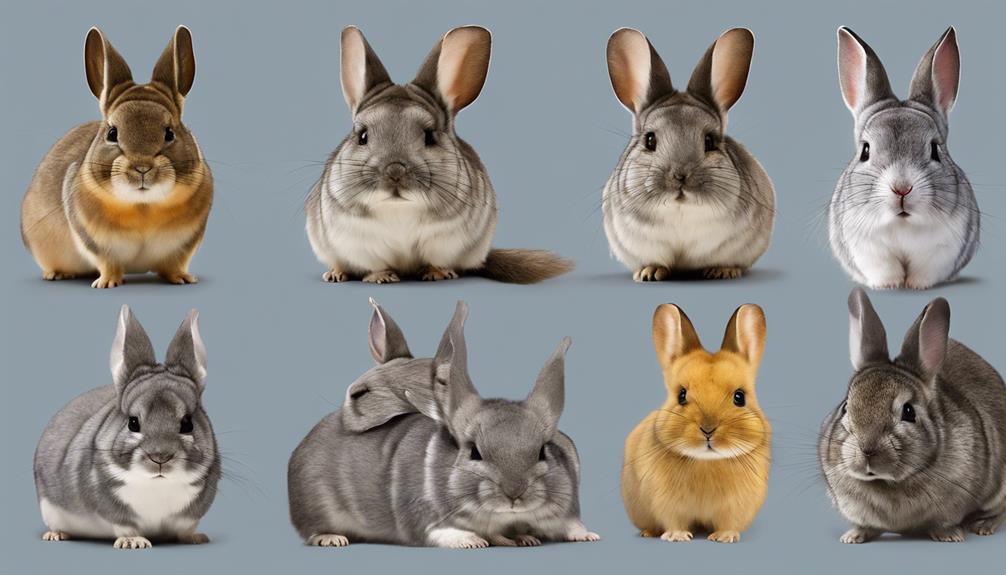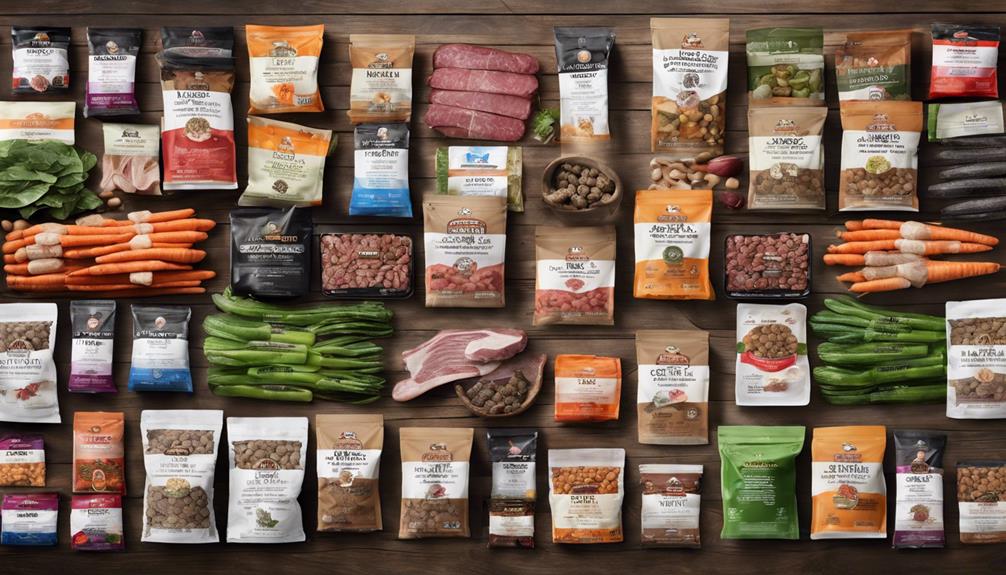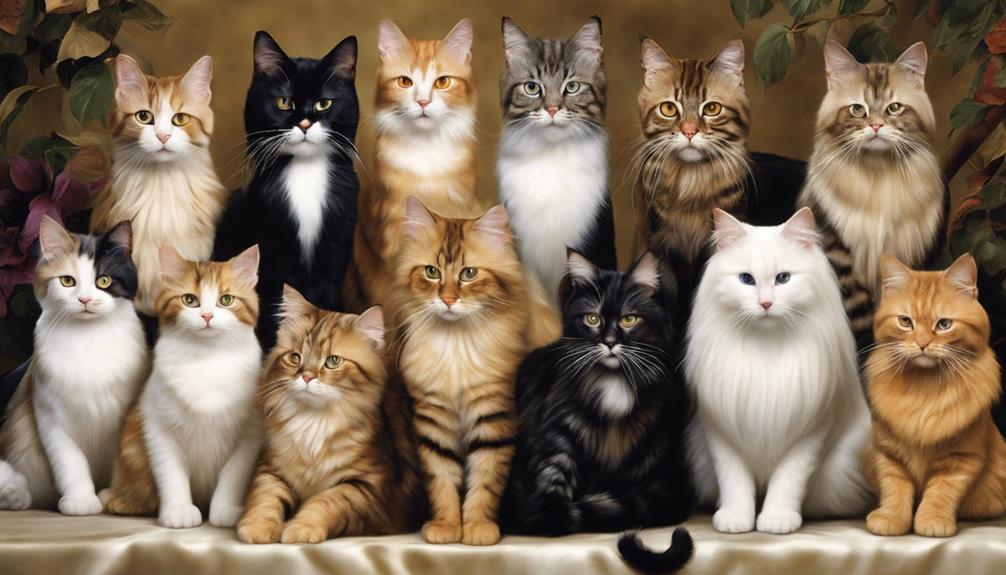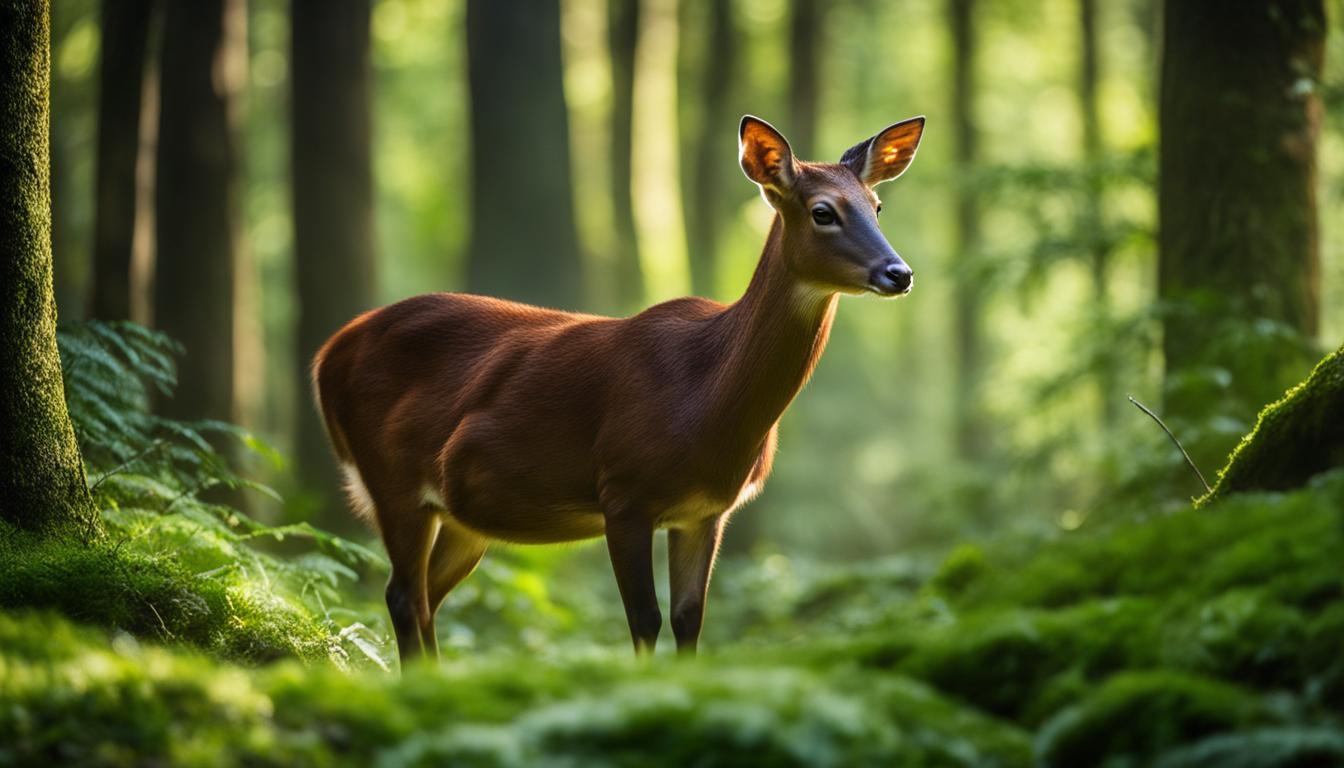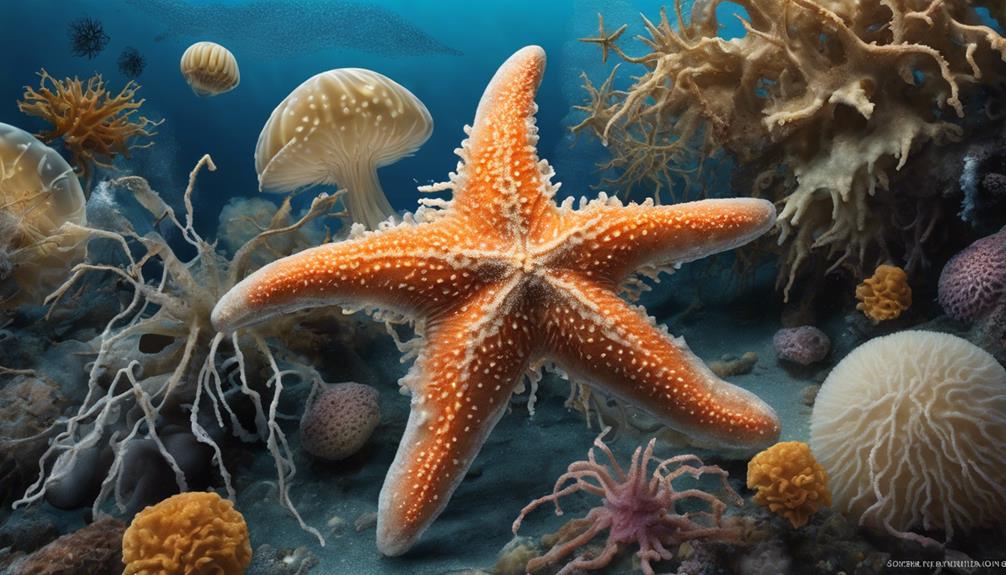Among the seven animals, only the Arctic Hare, Pika, Capybara, Jerboa, Viscacha, Hare, and Cottontail Rabbit share a few similarities with rabbits. The Arctic Hare's white fur and speed make it unique. The Pika's round body and high-pitched calls are distinctive. Capybaras resemble rabbits but are larger. Jerboas are adapted for sandy habitats with long hind legs. Viscachas, with vocalizations and agility, thrive in the Andes. Hares are faster and solitary, while Cottontail Rabbits have fluffy tails and breed prolifically. Each animal has specific traits that set them apart, indicating unique features beyond their visual similarities.
Key Takeaways
- Arctic hares have white fur for camouflage and large hind legs for speed.
- Pikas resemble rabbits with round bodies and short limbs, active in the day.
- Capybaras share similarities with rabbits but are larger and in a different mammal group.
- Jerboas have long hind legs, large ears, and agile movements in arid environments.
- Viscachas are large rodents known for agility and social behavior in South America.
Arctic Hare
In the frigid Arctic tundra regions of North America, the Arctic Hare thrives with its distinctive white fur coat. This coat serves as excellent camouflage against the snowy backdrop, helping the hare evade predators and survive in its harsh environment. One striking feature of the Arctic Hare is its large hind legs, which enable it to reach speeds of up to 40 miles per hour, making them one of the fastest land animals in the Arctic. These powerful hind legs are essential for quick escapes from predators like Arctic foxes and wolves.
The Arctic Hare's adaptation to extreme cold temperatures is remarkable. With the ability to withstand chilling lows of -50 degrees Celsius, these hares have evolved to thrive in one of the coldest habitats on Earth. Despite the harsh conditions, Arctic Hares sustain themselves by feeding on woody plants, grasses, and mosses, showcasing their resilience and ability to find food sources even in the most challenging environments.
Pika
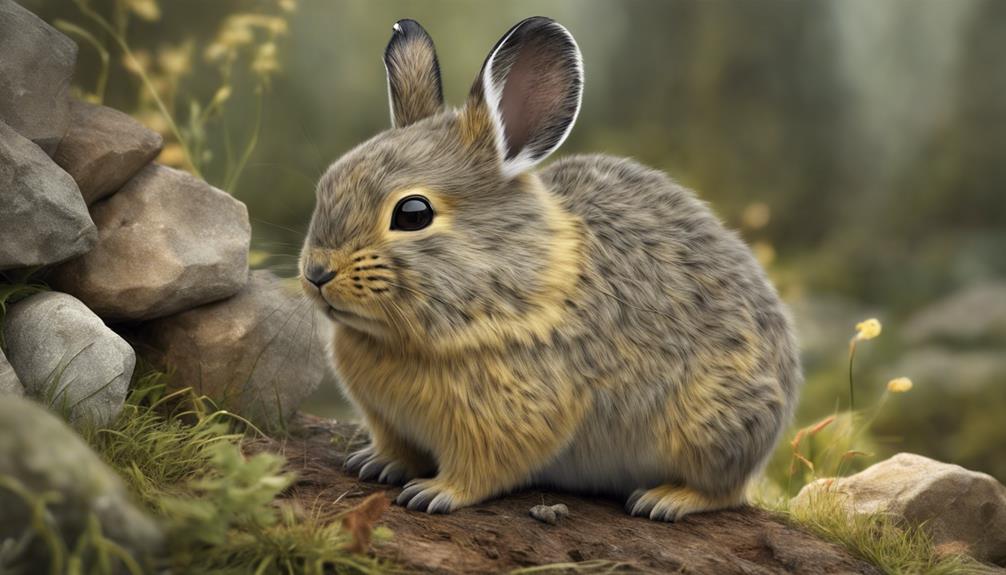
Pikas, often mistaken for baby rabbits, are distinct creatures with their own unique characteristics. They've rounded bodies, short limbs, and a lack of a visible tail, setting them apart from traditional rabbits.
Exploring the differences between pikas and rabbits reveals fascinating insights into the diverse world of small mammals.
Pika Characteristics
Pika, a small herbivorous mammal closely related to rabbits and hares, is known for its round body and short limbs. People call them the 'rock rabbits' due to their habitat in rocky mountainous regions.
These creatures are pretty cool because they don't hibernate like other animals. Even though they may look like a cross between a rabbit and a guinea pig, pikas have their own unique charm. They communicate through high-pitched calls and are quite active during the day.
Pikas are expert harvesters, gathering hay and grass during the summer to survive the harsh winter months. Their adaptability and cute appearance make them fascinating creatures to observe in the wild.
Pika Vs Rabbit
Resembling a mix between a rabbit and a guinea pig, pikas are small mammals closely related to rabbits and hares, belonging to the Ochotonidae family. When comparing pikas to rabbits, it is crucial to note their distinct characteristics. Let us know if you can spot the differences in the table below:
| Characteristic | Pikas | Rabbits |
|---|---|---|
| Tail | No external tail | Have a visible fluffy tail |
| Body Shape | Shorter, rounder body shape | Slender, elongated body shape |
| Habitat | Rocky mountain regions | Various habitats worldwide |
| Vocalizations | High-pitched 'meep' sounds | Squeaks, grunts, and thumps |
These unique features set pikas apart from rabbits. Their adaptations to rocky environments and distinctive calls make them fascinating creatures.
Capybara
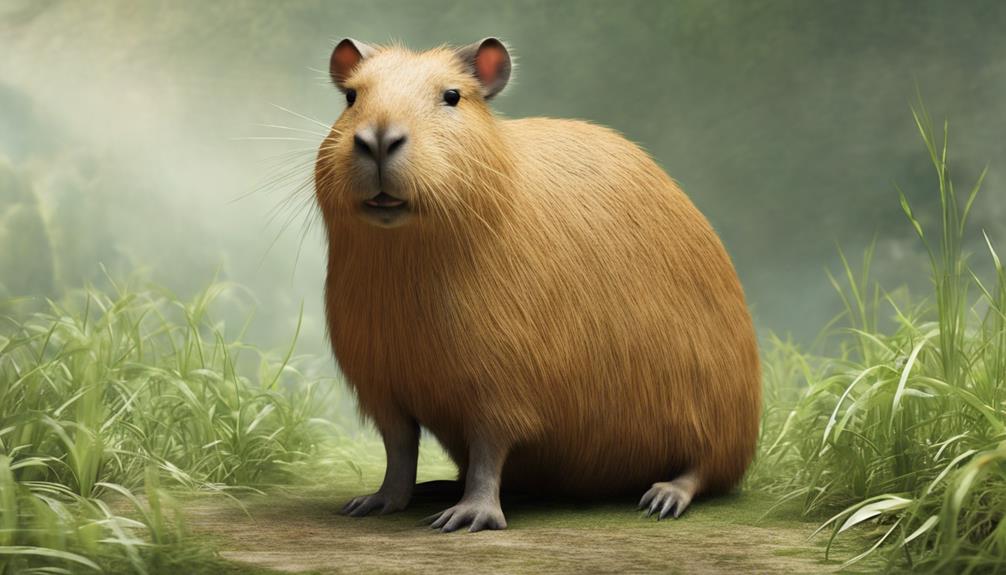
Capybaras, the largest rodents globally, bear a striking resemblance to rabbits in their physical appearance. They share common features like round faces and small ears, making them look akin to their fluffy counterparts.
Besides their looks, capybaras exhibit behavioral similarities to rabbits, such as their gregarious nature and tendency to live in large herds.
Capybaras Resemblance to Rabbits
With their large eyes and round bodies, capybaras bear a striking resemblance to rabbits despite belonging to different orders in the animal kingdom. Many people say that capybaras look like oversized rabbits due to their similar physical features. Both animals have short, rounded ears, but capybaras are much larger in size compared to rabbits.
While capybaras and rabbits share a herbivorous diet, feeding on plants and grasses, capybaras have a more robust build than the slender bodies of rabbits. It's interesting to note that despite these similarities, capybaras belong to the order Rodentia, while rabbits are part of the Lagomorpha order. These unique resemblances between capybaras and rabbits continue to fascinate animal enthusiasts around the world.
Physical Features Comparison
Comparing the physical features of capybaras to rabbits reveals distinct differences in body structure and diet preferences. Capybaras have large, round heads and short, rounded ears, similar to rabbits. However, capybaras have long, sturdy bodies with short legs, contrasting the slender build of rabbits. The table below highlights some key differences between capybaras and rabbits:
| Feature | Capybaras | Rabbits |
|---|---|---|
| Body Structure | Long, sturdy bodies | Slender build |
| Teeth | Large, sharp incisors | Small, chisel-like teeth |
| Size | Up to 150 pounds | Smaller in size |
| Habitat | Semi-aquatic, near water bodies | Prefer dry habitats |
Behavioral Similarities Noticed
Noticing behavioral similarities between capybaras and rabbits reveals their shared social and herbivorous nature. Capybaras, much like rabbits, thrive in herds, showcasing their social tendencies. Both species rely on a diet rich in vegetation, emphasizing their herbivorous preferences.
Communication within capybara and rabbit groups is crucial, with vocalizations, grooming, and body language playing essential roles. As prey animals, capybaras and rabbits exhibit constant vigilance against potential predators, a shared trait that underscores their survival instincts.
Additionally, the playful and curious demeanor displayed by capybaras mirrors the energetic behaviors often observed in rabbits, such as running and jumping. These behavioral resemblances highlight the intriguing parallels between these two fascinating species.
Jerboa

Known for their long hind legs reminiscent of rabbits, jerboas are small rodents that exhibit remarkable agility and unique desert adaptations. These creatures have evolved to thrive in arid environments, utilizing their distinctive physical features to survive. With their large ears, jerboas can detect predators and potential threats, allowing them to react swiftly and evade danger, much like rabbits. Their long tails serve as an essential tool for maintaining balance during rapid movements, aiding in their impressive agility. Jerboas navigate their sandy habitats by hopping and leaping, showcasing a behavior that closely resembles the way rabbits move.
Belonging to the family Dipodidae, jerboas are often likened to miniature kangaroos due to their striking appearance and specialized adaptations. These fascinating rodents offer a unique glimpse into the diversity of animal life, demonstrating how different species can develop similar traits to thrive in challenging environments. Observing jerboas in their natural habitat provides valuable insights into the wonders of evolution and the remarkable ways in which animals adapt to their surroundings.
Viscacha

As we shift our focus to the Viscacha, another fascinating rabbit-like creature, we encounter a large rodent species native to South America, particularly thriving in the rugged terrain of the Andes Mountains. Viscachas are herbivores, munching on grasses, herbs, and various plant materials in their rocky, mountainous habitats. These social animals, living in colonies, depend on their fluffy tails for balance while traversing the rocky landscape. Despite their rabbit-like appearance, Viscachas aren't closely related to rabbits. They're known for their distinctive vocalizations and remarkable agility when maneuvering through rocks and cliffs.
These creatures possess long ears, fluffy tails, and a body shape resembling rabbits, making them fascinating to observe in their natural environment. Their adaptation to the challenging Andean terrain showcases their resilience and unique characteristics. Viscachas play a crucial role in the ecosystem, contributing to the biodiversity of South America's high-altitude regions. Observing Viscachas in the wild provides valuable insights into the diversity of wildlife in the Andes Mountains.
Hare
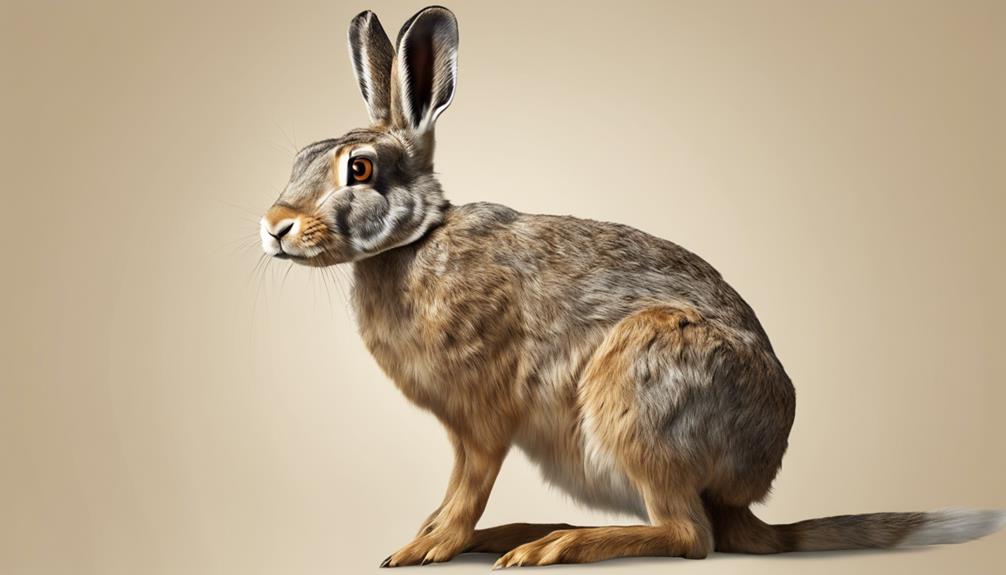
Swift and agile, the hare is a larger and faster relative of the rabbit, equipped with long hind legs for rapid movement across its habitat. Hares boast distinctive long ears with black tips and are known for their solitary behavior. Unlike rabbits, hares rely on their powerful hind feet for defense, capable of delivering strong kicks when threatened. These creatures don't dig burrows like rabbits; instead, they create shallow nests known as forms for shelter.
One fascinating aspect of hares is their unique breeding strategy. Leverets, the young hares, are born fully furred with open eyes, immediately ready to hop around and fend for themselves. This contrasts with rabbits, whose kittens are born hairless and blind, needing more care and protection from their parents. Hares' ability to swiftly adapt and fend for themselves shortly after birth showcases their remarkable resilience in the wild.
Cottontail Rabbit
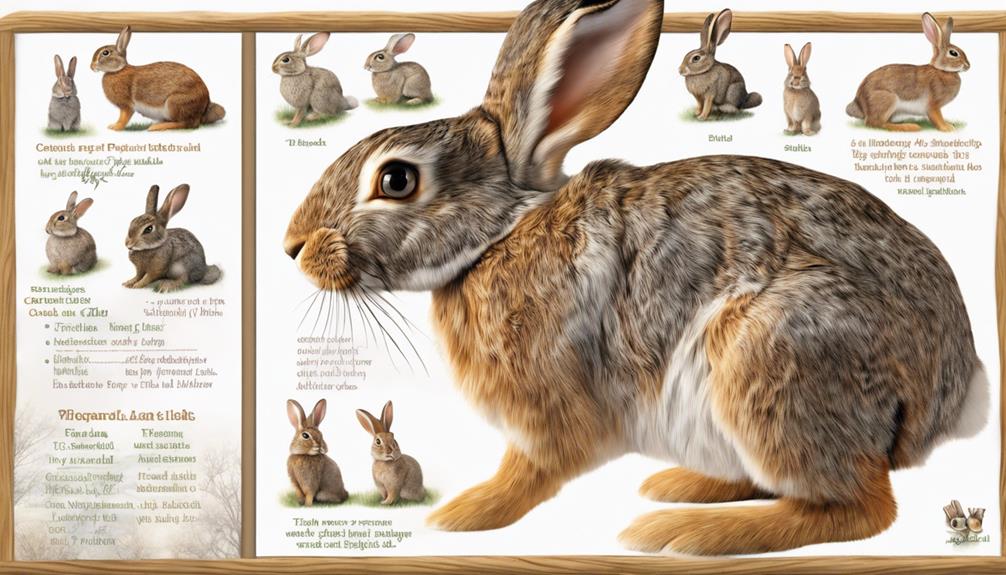
Inhabiting various regions of North and South America, the Cottontail Rabbit is distinguished by its fluffy white tail resembling a ball of cotton. These rabbits are known for their excellent camouflage skills, using their brown fur to blend in with their surroundings and evade predators.
Cottontail rabbits are crepuscular creatures, meaning they're most active during dawn and dusk, seeking shelter in hidden burrows during the day. Their ability to adapt to various habitats, from forests to deserts, showcases their resilience and versatility.
Females of this species are prolific breeders, capable of producing multiple litters of kittens each year, contributing to their population's sustainability. Observing these rabbits in their natural habitats can provide valuable insights into their behavior and survival strategies.
The Cottontail Rabbit's unique characteristics and adaptive nature make it a fascinating subject for wildlife enthusiasts and researchers alike.
Frequently Asked Questions
What Animal Looks Similar to a Rabbit?
I know an animal that looks similar to a rabbit. It's the pika, with its round body and short limbs. The resemblance to rabbits is striking. I find it fascinating how nature creates these connections between different species.
What Is the 7 Classification of a Rabbit?
In my exploration, the seven classifications of a rabbit include kingdom Animalia, phylum Chordata, class Mammalia, order Lagomorpha, family Leporidae, genus Oryctolagus, and species cuniculus. This structure helps define the unique characteristics of rabbits.
What Is the Closest Animal to a Rabbit?
The closest animal to a rabbit is the hare, sharing the same family and many physical traits. Hares have longer legs and ears than rabbits. Both are Lagomorphs, known for burrowing and speed.
What Mammal Looks Like a Rabbit?
When considering animals resembling rabbits, the pika, European hare, American pika, cottontail rabbit, and the mountain viscacha come to mind. Each displays unique features akin to rabbits, such as round bodies or long ears.
Conclusion
To sum up, while some of these animals may share similarities with rabbits in regards to appearance, it's important to remember that each species has its own unique characteristics and behaviors.
As the saying goes, 'Don't judge a book by its cover.' It's fascinating to learn about the diversity of animals in the world and appreciate the ways in which they've adapted to their environments.
Keep exploring and discovering the wonders of the animal kingdom!
